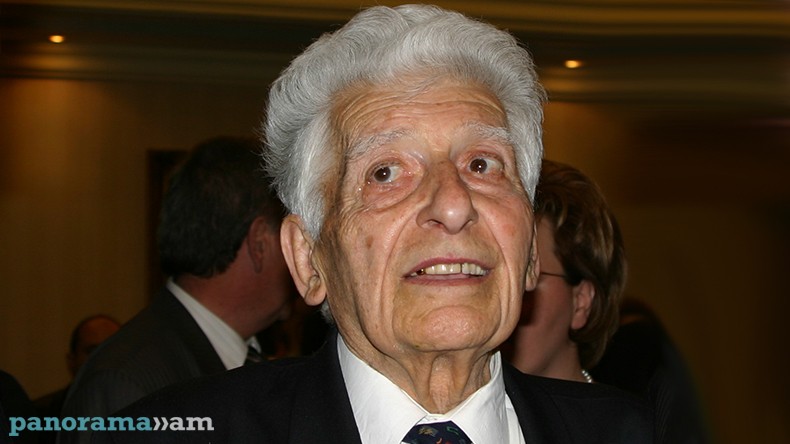
Renowned composer Edvard Mirzoyan’s 95th anniversary
“I don’t know what Hell is, but I sure know what Heaven feels like. I think about the human being born on this planet. He is born through struggle. He is born because he wins. If he wouldn’t struggle and win, he wouldn’t be born. I believe that if we’re born on this planet, means we’ve already won in the universe and we are in Heaven. Nature is Heaven,” told composer Edvard Mirzoyan to Kinoashkharh 10 days before his death.
Mirzoyan was born on this day in 1921 in Gori, Georgia. Initially schooled in music in Yerevan and graduated from the Komitas State Conservatory, Mirzoyan went on to Moscow to further refine his art. In late 1956 he was elected president of the Armenian Composers’ Union, a position he held until 1991. He was a professor of composition at the Komitas State Conservatory, and president of the Peace Foundation of Armenia.
Mirzoyan’s compositional output is relatively small but quite distinguished, combining graceful lyricism with intense drama. With its formal structure and tonal design, his style has been described as Neoclassical, with elements of Armenian folksong always present. Mirzoyan’s String Quartet, Cello Sonata, Symphony for Strings and Timpani, and Epitaph for String Orchestra have become notable additions to the repertoire.
He also wrote music for films, such as Yot hndik tghaner (Seven Indian Boys, 2007), Khachmeruki deghatune (Crossroad's pharmacy, 1988), Tasnerku ughekitsner (Twelve Companions, 1962), Pluzum (Collapse, 1960).
Famous musicians, such as Avet Terterian, Constantine Orbelian, Robert Amirkhanian and many others were the composer’s students.
Mirzoyan was an honoured artist of the Armenian SSR, People's Artist of the USSR and Armenian SSR. He received the Order of Lenin, the Emblem of Honour and declared the winner of the State Prize of the Soviet Union. Edvard Mirzoyan also received many other prizes and awards.
Composer Edvard Mirzoyan died on October 5, 2012 and is buried at the Komitas Pantheon, Yerevan.
Newsfeed
Videos






























